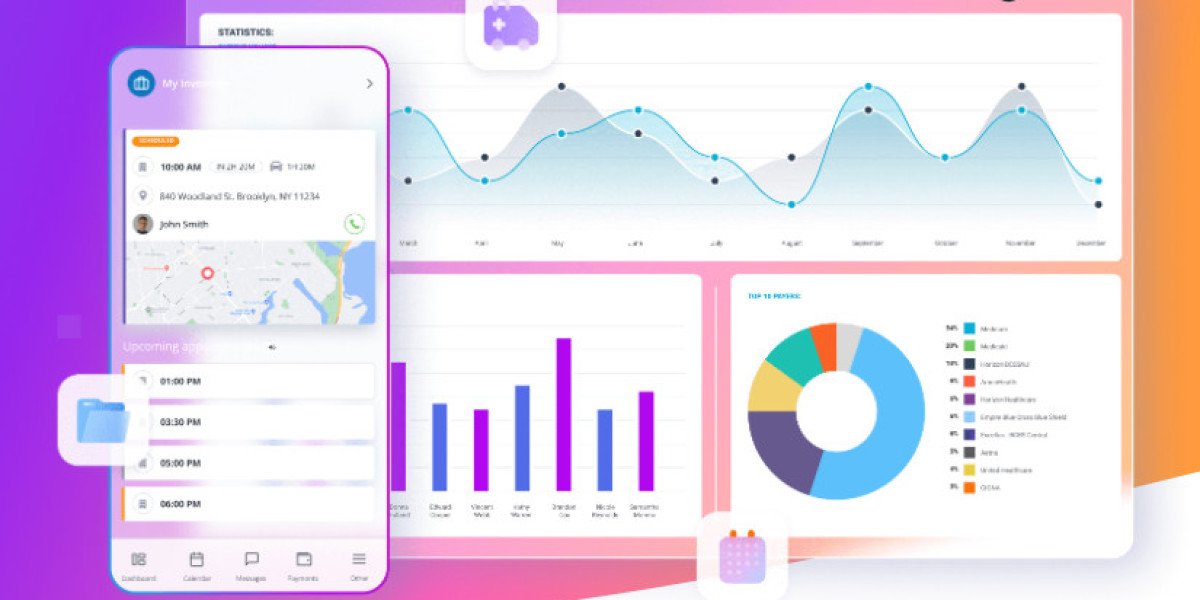As hospitals and clinics seek to optimize their operations and improve patient outcomes, the role of medical equipment management software (MEMS) is becoming increasingly pivotal. This article explores the future trends shaping MEMS and provides a comprehensive overview of what to expect in the coming years.
1. Integration with Internet of Things (IoT) Technology
The Internet of Things (IoT) is revolutionizing various sectors, and healthcare is no exception. IoT technology enables devices and systems to communicate and share data in real-time, leading to more efficient and effective management of medical equipment.
a. Real-Time Monitoring and Maintenance: Future MEMS will leverage IoT to provide real-time monitoring of medical equipment. Sensors embedded in devices will continuously collect data on performance, usage, and environmental conditions. This data can be analyzed to predict equipment failures, schedule maintenance, and ensure that devices are operating within optimal parameters.
b. Enhanced Asset Tracking: IoT technology will also improve asset tracking by providing real-time location information for medical equipment. This will reduce the time spent searching for misplaced or borrowed items and ensure that equipment is readily available when needed.
2. Artificial Intelligence (AI) and Machine Learning
AI and machine learning are set to play a crucial role in the evolution of MEMS. These technologies can analyze vast amounts of data to provide insights that drive decision-making and improve efficiency.
a. Predictive Analytics: AI-powered predictive analytics will enable MEMS to forecast equipment failures and maintenance needs with greater accuracy. By analyzing historical data and identifying patterns, AI can predict when a device is likely to fail or require maintenance, allowing healthcare facilities to take proactive measures.
b. Automated Inventory Management: Machine learning algorithms can automate inventory management by predicting equipment needs based on usage patterns and historical data. This will help healthcare providers maintain optimal inventory levels, reduce costs, and minimize the risk of equipment shortages.
3. Cloud-Based Solutions
Cloud computing is becoming increasingly prevalent in various industries, and MEMS is no exception. Cloud-based solutions offer several advantages, including scalability, accessibility, and cost-effectiveness.
a. Centralized Data Management: Cloud-based MEMS will enable centralized data management, allowing healthcare providers to access and manage equipment information from anywhere. This will improve collaboration between departments and facilitate data sharing across different locations.
b. Enhanced Security and Compliance: Cloud providers invest heavily in security measures to protect data. Future MEMS will benefit from advanced security protocols and compliance features, ensuring that sensitive equipment data is protected and meets regulatory requirements.
4. Integration with Electronic Health Records (EHR) Systems
The integration of MEMS with Electronic Health Records (EHR) systems is expected to become more seamless in the future. This integration will enhance the coordination between medical equipment management and patient care.
a. Improved Workflow Efficiency: Integrating MEMS with EHR systems will streamline workflows by providing a unified view of patient data and equipment status. This will reduce the need for manual data entry and improve the efficiency of equipment-related tasks.
b. Enhanced Patient Safety: By linking equipment data with patient records, healthcare providers can ensure that the right equipment is used for the right patient. This will enhance patient safety and reduce the risk of equipment-related errors.
5. Telemedicine and Remote Equipment Management
The rise of telemedicine has changed the way healthcare services are delivered, and it is also influencing the field of medical equipment management.
a. Remote Monitoring and Diagnostics: Future MEMS will support remote monitoring and diagnostics, allowing healthcare providers to manage and troubleshoot equipment from a distance. This will be particularly beneficial for managing equipment in remote or underserved areas.
b. Telemedicine Integration: Integration with telemedicine platforms will enable healthcare providers to conduct virtual equipment assessments and consultations. This will improve access to medical equipment management services and support remote patient care.
6. Blockchain for Data Integrity and Security
Blockchain technology, known for its role in cryptocurrency, is finding applications in various industries, including healthcare. In the context of MEMS, blockchain can enhance data integrity and security.
a. Secure Data Transactions: Blockchain's decentralized and immutable ledger ensures that equipment data transactions are secure and tamper-proof. This will enhance the trustworthiness of equipment records and prevent data manipulation.
b. Transparency and Traceability: Blockchain will provide transparency and traceability in the equipment management process. It will allow healthcare providers to track the history of equipment usage, maintenance, and repairs, ensuring accountability and compliance.
7. User-Centric Interfaces and Usability Enhancements
As MEMS evolves, user-centric design will become increasingly important. Future systems will focus on enhancing usability and ensuring that healthcare providers can easily navigate and utilize the software.
a. Intuitive Dashboards and Reporting: Future MEMS will feature intuitive dashboards and reporting tools that provide clear and actionable insights. Customizable interfaces will allow users to tailor the system to their specific needs and preferences.
b. Mobile Accessibility: Mobile accessibility will be a key feature of future MEMS, allowing users to manage equipment and access data from smartphones and tablets. This will improve flexibility and ensure that users can perform tasks on the go.
8. Sustainability and Green Initiatives
Sustainability is becoming a critical consideration in healthcare, and MEMS will play a role in supporting green initiatives.
a. Energy Management: Future MEMS will include features for monitoring and managing the energy consumption of medical equipment. This will help healthcare facilities reduce their carbon footprint and operate more sustainably.
b. Lifecycle Management: Sustainable lifecycle management will become a focus, with MEMS providing tools for tracking the entire lifecycle of medical equipment, from acquisition to disposal. This will support responsible disposal practices and promote the reuse of equipment.
9. Regulatory Compliance and Adaptation
The regulatory landscape for medical equipment is continually evolving, and MEMS will need to adapt to changing requirements.
a. Compliance Tracking: Future MEMS will include features for tracking and managing regulatory compliance, ensuring that equipment meets the latest standards and guidelines. This will help healthcare providers avoid penalties and maintain high standards of care.
b. Adaptability to New Regulations: As regulations change, MEMS will need to adapt quickly to ensure ongoing compliance. Future systems will be designed with flexibility in mind, allowing for updates and modifications to meet new regulatory requirements.
10. Personalization and Customization
Personalization and customization will become increasingly important as healthcare providers seek solutions that meet their specific needs.
a. Tailored Solutions: Future MEMS will offer tailored solutions that align with the unique requirements of different healthcare settings. Customizable features will allow providers to configure the system according to their operational needs and preferences.
b. User-Defined Alerts and Notifications: Personalized alerts and notifications will enable users to set preferences for equipment-related events. This will improve responsiveness and ensure that users are promptly informed of critical issues.
Conclusion
The future of medical equipment management software is bright and full of promise. As technology continues to advance, MEMS will evolve to offer more sophisticated, efficient, and user-friendly solutions. Integration with IoT, AI, and cloud computing will drive innovations in real-time monitoring, predictive analytics, and centralized data management. Enhanced security, regulatory compliance, and sustainability will be key considerations, ensuring that MEMS meets the demands of modern healthcare environments.
By staying informed about these trends and embracing emerging technologies, healthcare providers can leverage MEMS to improve operational efficiency, enhance patient care, and navigate the complex landscape of medical equipment management with confidence. The future of MEMS is not just about keeping up with technological advancements; it's about leveraging these innovations to create a safer, more efficient, and patient-centered healthcare system.








